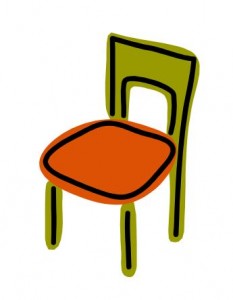Happiness research indicates that we all have a “base level” of happiness. Positive and negative events veer us off this baseline only temporarily. A vacation or the purchase of a long sought of appliance only makes us temporarily happy and we revert back to our base level of happiness. On the same lines a flat tire or an illness makes us temporarily unhappy and we eventually revert back to our base level of happiness.
These may seem trivial examples but studies have shown that even after major events like winning a lottery or losing a leg, people usually revert to the same baseline happiness within a year of the event. So does this mean that the pursuit of happiness is a futile exercise? If the level of our happiness is pretty much baked in, why should we spend a lifetime of effort looking for happiness? The answer is that our baseline happiness, though relatively stable, can be moved up and down. This means we can in-fact become happier if we do the right things. The problem is that many of these are not things that we usually assume make us happy.
Studies have shown that happiness increases with wealth only up to a level. In the US this is an annual income of $75,000. Above this level of income there is only weak correlation between happiness and money. After this, social status then becomes a bigger driver of happiness than money. If the work we do is widely recognized and appreciated, this too leads to higher happiness because of our increased social standing, even if it may not make us wealthier. This means that the first leg of happiness is money, success, and social-status.
The second leg of happiness is social support and social network. This refers to the relationships in our lives and the connections we have with significant others, friends, relatives, and associates. If we have long and stable relationships, positive support, and strong connections, we are happier. If we are lonely and/or have poor connection with family and friends our level of happiness is lower.
The third leg of happiness is stress. The level of stress that we have has a direct impact on our emotional and physical well being. If we are less stressed we are able to relax and enjoy the moment.
Another reason why stress is so important is that it also plays a direct role with the first two legs of happiness. Higher stress levels clouds our thinking and makes us error prone. Our chances of success decrease at high stress levels because high stress lead to poor decisions.
Stress also had direct correlation with our relationships. Higher stress levels make us high-strung and emotional. We are ready to explode in anger or have a meltdown. Consequently relationships take a beating when our stress levels rise. We may find our social support and social network diminish as stress levels rise and consequently our happiness levels go down.
The problem with the first leg of happiness is that after a certain level, making increasing progress does not add to happiness. The main reason for this is that increasing wealth, success, and social standing, tends to increase our ego. This in-turn leads to higher stress and this counters any increase of happiness that we may otherwise have accrued.
An understanding of the three legs of happiness and the correlation between them should allow us to better manage our lives and increase our levels of happiness. As we make progress on the first two legs of happiness we must always keep an eye on the level of stress in our lives and take step to counter this. By balancing the three legs appropriately we can lead both happy and successful lives.
Credits:This has been written by Raj Shah and edited by Ketna Shah.




